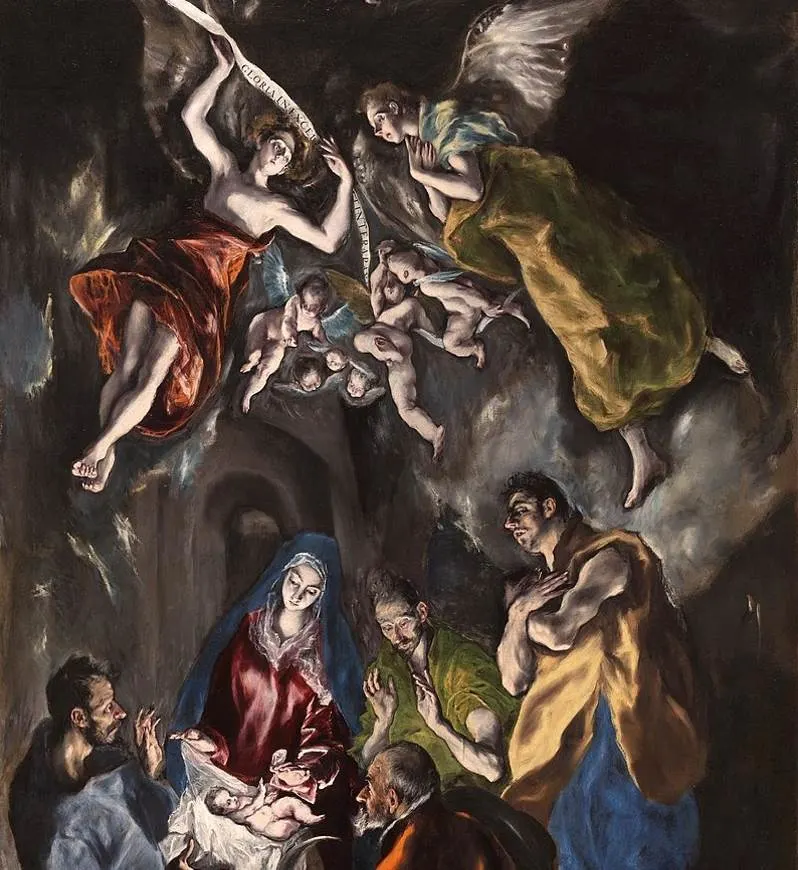One of the most fascinating works of the Greek artist of the Spanish Renaissance named Domḗnikos Theotokópoulos (1541-1614), better known by his nickname “El Greco,” was also his final one.
This work is known as “The Adoration of the Shepherds” and was painted for a very particular purpose. Let’s take a closer look at this masterpiece which has a remarkable history.
1. It was completed during the last year of El Greco’s life
El Greco was born in the Kingdom of Candia, an island now part of Greece and which is known as Crete. This island was part of the Republic of Venice during this period and he moved to Venice around 1567.
After staying in Italy for well over a decade, he made his way to Madrid and eventually settled in Toledo, a much smaller city in Spain. It’s here that he created most of his masterpieces, including “View of Toledo” which depicts the city he lived and worked in.
The Adoration of the Shepherds was completed between 1612 and 1614, which means the year that he passed away at the age of 73. This is remarkable because he painted it to decorate his tomb at the convent of Santo Domingo el Antiguo in Toledo.

2. The painting features characteristic elements of the artist
Even though El Greco was influenced by a wide variety of artists, mainly the ones he came across in Italy, he always retained his unique style. This also means that he ended up becoming one of the most influential artists in history.
It has been stated that his works are predecessors of those of Expressionist artists and Cubist artists, both art movements that emerged several centuries later.
The influence of the Venetian Renaissance and other Mannerist artists didn’t always find appreciation with his contemporaries. The dramatic effects, the sharp contrast of light and dark, and the peculiar shape of bodies are distinctive of this remarkable artist.
3. The angels might give a clue about the missing part of another work
The subject of the painting is one of the most common ones in Christian art. It depicts the moment shortly after the baby Jesus Christ was born. The shepherds are said to have arrived shortly after the baby was born.

The baby Jesus Christ appears to be emitting light that shines through onto the faces and body parts of the dazzled shepherds who witness the scene.
The upper part features a chaotic group of angels which seemingly completes the entire composition, a remarkable talent of the artist. It’s assumed that this group of angels might resemble the missing section of “The Opening of the Fifth Seal,” a very similar-looking work of art by El Greco.

4. The painting remained where El Greco was initially buried
The painting was completed to be put above the tomb of El Greco, and this actually happened as well. This place is called the Monastery of Saint Dominic of Silos, right in the heart of the city of Toledo.
The painting hung in the chapel that originally housed the tomb of El Greco and remained there until the 20th century. The remains of El Greco were removed to another church in Toledo just a few years later.
5. The work is on display at the most famous museum in Spain
The painting hung at the monastery that once contained El Greco’s tomb until the year 1954. This was the year that the Spanish state bought the painting.
They instantly transferred it to the painting’s current location, the Museo del Prado in the center of Madrid. It can be found in Room 009B in the most famous museum in Spain.

More interesting facts about the Adoration of the Shepherds by El Greco
6. Even though El Greco painted a few smaller paintings, most of his oeuvre consists of relatively large works. Not as big as some of the other Mannerist artists he most definitely saw in Venice, such as the works of Veronese and Tintoretto paintings to name a few, but still pretty big.
This work has dimensions of 319 × 180 centimeters (126 × 71 inches) which makes it one of the larger of his most famous works.
7. The shepherds and both parents along with the angels aren’t the only figures adoring the child. It’s hard to notice initially but there’s also an ox that appears to be kneeling just in front of the baby.

8. The reason why El Greco’s remains were exhumed at the Monastery of Saint Dominic of Silos in 1608, about 4 years after he passed away, was a dispute between the Cisterian nuns and El Greco’s son Jorge Manuel.
This eventually happened but the painting remarkably remained inside the chapel until it was acquired by the Spanish state in 1954. Jorge Manuel was an artist in his own right and even though a relatively proficient painter, a skilled architect as well who worked on the Toledo Cathedral.
9. The version of the painting at the Prado Museum in Madrid isn’t the only version. A preparatory sketch completed by the workshop of the artist is owned by the Metropolitan Museum of Art in New York City.
This painting is believed to have been created around the same time as El Greco completed the main version of the work.
10. The Adoration of the Shepherds isn’t the only work that El Greco completed for the Monastery of Saint Dominic of Silos. Long before he completed the final work of his life, he already painted a work called the “Assumption of the Virgin.”
This work was completed in 1577 and didn’t remain in Spain. It’s now on display at the Art Institute of Chicago and a replica decorates the altar of the church in Toledo.

